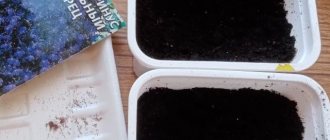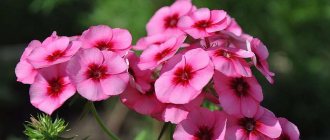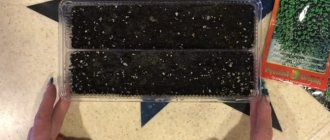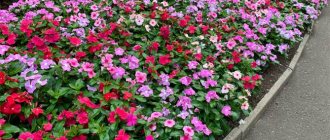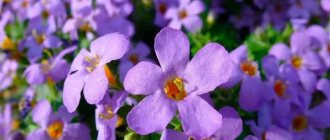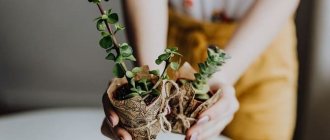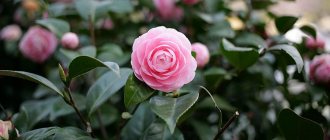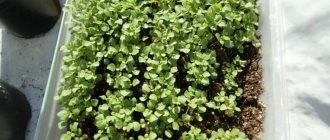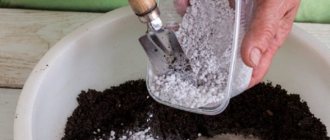General description with photo
In different classification systems, lobelia is classified either in the Lobeliaceae family of the same name, or in the Kolokolchikov family. In nature and in ornamental gardening, the crop is represented by both annual and perennial varieties. It can take the form of a bush, subshrub or herbaceous plant. For growing in the garden, preference is often given to compact species no more than half a meter in height, although some varieties can grow up to 1.5 m. The plant has fragile shoots that branch from the very base of the bush. The peduncles are short, the buds are small, but the flowering is abundant, in bright colors, mainly in blue-blue tones. The first flowers bloom in June, do not last long, but continuously replacing each other, create the effect of continuous flowering until the onset of autumn cold weather. The fruit is a capsule with very small seeds that remain viable for up to 3 years.
Planting lobelia for seedlings depending on the region
Despite the fact that there are generally accepted times when it is recommended to sow lobelia seeds at home, it is very important to take into account the climatic characteristics of each planting region.
- In the southern regions, you can sow seeds already at the end of February.
- For the regions of central Russia, there is no need to rush to plant; it is better to sow in early spring.
- In the northern regions, the Urals and Siberia, seeds are sown in January and February. Since summer does not last long there, it is very important not to be late with planting in order to have time to admire the beautiful flowers.
Varieties of lobelia with photos
The genus includes approximately three hundred species, some of which are grown on an industrial scale for use in the production of medicines. In horticultural culture, only about 20 varieties are grown that are easy to care for, so even inexperienced gardeners should pay attention to them.
The genus is represented by several forms.
- Ampel or cascade. The shoots are thinner and more flexible, lodging type.
- Erect. It has a standard height and almost perfectly straight shoots, making the plant look columnar.
- Compact. A very small, but lush, densely filled bush no more than 15 cm in height.
- Spreading. It forms a loose bush with shoots up to 30 cm, while its height does not reach 20 cm due to its spreading shape.
- Dwarf. The shortest type of lobelia, barely reaching 12 cm.
- Ampelous-bush. A plant of unusual bush shape with shoots directed downwards.
Lobelia erinus (blue)
Annual compact bush up to 25 cm in height. The leaves are small, elongated. Small inflorescences are painted in blue tones. The varietal line may also include white, muted red and some other colors. Blooms throughout the warm season.
Lobelia cardinalis (purple)
Tall, reaching a meter in height, with straight branched stems. The inflorescences are spike-shaped, purple-red. The difference between this species is its preference for waterlogged, swampy soil. The best place for planting it on the site is the banks of reservoirs, hollows, and places where melt and rainwater drain. Characterized by high winter hardiness.
Lobelia Syphilitica
It is very similar to the purple variety both in appearance and in planting preferences and frost resistance, but it blooms in blue-violet tones.
Lobelia fiery
It has tall, up to 75 cm, erect shoots and spike-shaped elongated inflorescences, painted in scarlet tones.
Lobelia Dortman
An endangered species, increasingly rare in the wild. It has bell-shaped flowers of bluish or white color, loves sandy soils.
Lobelia climbing
A climbing perennial of the ampelous type, blooming in a blue and white palette. With high-quality molding, it produces exceptionally lush specimens that bloom so profusely that the bush turns into a blue cloud during flowering. Good for hanging baskets.
Lobelia "Riviera"
It has short and straight, rigid stems and is a dwarf variety, not exceeding 13 cm in height. Grown as an annual. It blooms for a very long time and profusely with small pink-purple corollas of spike-shaped inflorescences.
Lobelia Rosamund
Another popular low-growing annual with sloping stems, red flowers with a white throat. The first buds open 2.5 months from the date of sowing the seeds and continue to replace each other until the soil autumn frosts.
When to plant lobelia seedlings in 2022 according to the lunar calendar
Experienced flower growers, in addition to the generally accepted dates for sowing lobelia, also take into account lunar cycles. Following the recommendations of astrologers helps to obtain magnificently blooming, bright bushes of an unpretentious plant.
Favorable days for planting lobelia in 2022 according to the lunar calendar
Among all the dates, astrologers have identified the following numbers as favorable for planting lobelia
| Month | When is the best time to sow |
| January | from 5 to 7, 11, 15 and 17 |
| February | from 2 to 5, 10 and 12, from 13 to 15 |
| March | 3, from 7 to 9, 11, 14 and 15 |
| April | 6, 7, 10 to 12, 15 and 17 |
| May | 4, 7, 8 to 10, 13, 15 |
INTERESTING! Please note that the favorable days for sowing in 2022 were the first and second ten days of each month.
When is it not worth planting lobelia seedlings in 2022 according to the lunar calendar?
Among the dates when it is better not to plant lobelia, learned astrologers have identified the following dates.
| Month | When not to sow |
| January | 2, 18, 20, 22 and 25, 27, 30 |
| February | 1, 16, 21, 23 and 24, 26, 28 |
| March | 2, 18, 20, from 22 to 24, 27 and 30 |
| April | 1, 16, 22, 25, 26 to 29 |
| May | 16, 21, 23, 25 to 27, 30 and 31 |
On unfavorable days, you should suspend all work related to growing lobelia at home.
How to grow lobelia from seeds?
Growing a crop in open ground begins with planting seedlings at home. Perennial varieties can also be planted in open ground, but in this case flowering this year will be sparse or absent altogether. For annual varieties, planting by seedlings is preferable.
When to sow seeds for seedlings?
Lobelia should be planted early, literally in early February. Then, by the time it is planted in open ground, it will have already formed quite lush bouquets that will be ready for rapid, abundant flowering. However, over such a long period of time, seedlings can become very elongated, especially if there is a lack of lighting; this point should be taken into account in advance and space should be left in the planting container so that as the seedlings grow, soil can be added to them.
Lobelia seeds do not require pre-soaking.
How to sow lobelia for seedlings?
Due to the very small size of the seeds, the planting process can be difficult. Experienced gardeners use the “wet match” method for this. The sulfur-free end is dipped in water and then in a container with lobelia seeds. Those that remain stuck to the match are transferred to a cup with soil. They need to be buried minimally; nothing bad will happen if they remain lying on the surface (we are talking about planting seeds at home, since in open ground light seeds will be blown away by the wind). It is necessary to arrange a mini-greenhouse on top using plastic film, which must be removed daily for ventilation, and after the first shoots removed completely.
Seedling care
If all conditions are met, the first shoots should appear in 2 weeks. From this time on, the shelter will need to either be removed or a number of holes made in it for free ventilation for the first time. The soil should be permanently moist, but care must be taken to ensure that the seeds do not rot in it.
Lobelia is a light-loving plant. In the absence of good lighting, its seedlings will quickly stretch upward, which will not benefit its decorative effect. Even if the containers are on a bright windowsill, it will not be superfluous to provide the seedlings with additional lighting in the evening. Watering young seedlings is carried out using a spray bottle from a sufficiently large distance so as not to nail them to the ground.
Picking
There are no strict rules regarding picking time. You can determine when it will be needed by eye. You need to pick up seedlings several at a time into one cup, without trying to maintain a certain distance between them. This accuracy will ensure the splendor of the future composition.
Important! When picking into cups, soil should be poured into them to no more than a quarter of the height, since it is necessary to leave room for future addition to strengthen the root system and to avoid overly elongated shoots.
Adding soil
As the sprouts grow and stretch, it is recommended to constantly add 1-2 teaspoons of soil under the seedlings until the container is full. Don’t be afraid that some sprout will be covered with soil; this is not critical for this plant; very soon it will come to the surface and acquire additional roots.
Pruning seedlings
This point of caring for young lobelia seedlings can be classified as life hacks for its successful cultivation. As the seedlings grow, shoots that are too elongated should be trimmed with scissors. This must be done without fanaticism, forming neat bushes. Thanks to this haircut, future bushes will look neat, lush and bloom very profusely. Pruning is also recommended for hanging varieties, since weakly leafy, hanging shoots are not highly decorative.
Planting seedlings in open ground
You should begin taking containers with grown seedlings outside for several hours a day with the onset of consistently warm days. Once the air temperature is finally optimized, you can plant it in open ground.
Throughout the entire period of growing seedlings, the soil must not be allowed to dry out, even if you have to water several times a day!
This can quickly lead to irreversible consequences.
Rules and timing for picking lobelia seedlings
Lobelia seedlings should be planted when they grow 2-3 true leaves . It is important not to miss the optimal timing of the pick and carry out the event on time. The soil for picking can be used the same; the container can be a common one or individual containers with a diameter of about 5 centimeters (cups, pots).
Scheme for picking lobelia seedlings:
- An hour before the procedure, you need to water the container.
- Fill a new container with soil and water thoroughly.
- Make a planting hole in a new container (the distance between the holes is 3-5 centimeters). For this you can use, for example, a pencil.
- Picking this crop has its own peculiarity - transplantation must be done in bunches . To do this, grab a bush with about five sprouts and transfer it to a new container along with the soil. For convenience, you can use a wooden spatula or spoon. There should be a gap of about 3-5 centimeters between the piles of sprouts.
- Then you need to lightly cover the plant with soil and gently compact it.
- Water the plants in the new location.
Advice! It is recommended to water the seedlings with Energen after the procedure (15 drops per two liters of water). The solution will help the plant to take root better and faster.
After picking, the conditions for caring for lobelia seedlings change slightly. The temperature should be maintained around 16-18 degrees Celsius . For the first 2-3 days after the event, it is necessary to shade the plants for their successful adaptation. Two weeks after the procedure, you can fertilize with a mineral complex fertilizer (the concentration should be 2 times lower than that indicated on the package).
Lobelia care
The most labor-intensive process in the process of growing a crop is the stage of obtaining healthy, full-fledged seedlings. Further care for lobelia is not very difficult, but requires some attention and participation.
Watering
For successful development and abundant flowering, it is necessary that the soil always remains slightly moist. If it dries out completely, you can lose the plant very quickly. During the hot, dry summer period, you may have to water in the morning and evening. This is especially true for specimens grown not in open ground, but in hanging flower pots and floor vases. Due to the small volume of soil in them, rapid drying out is inevitable.
Top dressing
The first feeding can be done when the seedlings are 3-4 weeks old. It should be borne in mind that it can provoke stretching of shoots. In this case, fertilizing should be combined with subsequent pruning. When planted in nutritious soil, the plant can grow successfully with minimal doses of fertilizer. Mineral complexes for petunias are most suitable for lobelia. You can get by by adding nitrophoska or wood ash or alternating them. Nitrophoska is added according to the instructions, wood ash is diluted in water at the rate of 1 tbsp. l. per liter
Trimming
The first pruning, as already mentioned, is carried out at the stage of growing seedlings. Subsequently, pruning the bushes is necessary to preserve their decorative properties and stimulate the formation of new buds. After the first wave of flowering, the shoots are shortened more radically, so that after some time the plant can bloom again. In this case, the second flowering is often more abundant and spectacular.
Once every 3 years, it is recommended to carry out radical anti-aging pruning.
Soil requirements
The culture loves loose and well-permeable soils, grows well on leafy or ordinary garden soil with the addition of sand and vermiculite.
The soil should not be oversaturated with humus, otherwise lobelia may refuse to bloom.
When to plant lobelia seedlings, in what month
At home, in order to get strong and healthy seedlings, you need to start sowing seeds in early February. This is the most optimal time to sow, because the seedlings will develop correctly, and the lobelia will bloom at the right time.
If you want to enjoy magnificent flowering earlier than usual, then sowing is moved to January.
In this case, you need to be prepared for the fact that you will have to devote more time to the seedlings than usual. They will have to be additionally illuminated and ensure that they do not stretch out. Bushes grown in this way and experiencing a lack of light will not be lush and will lose their charm.
Possible growing problems
- The leaves dry out and curl. The reason lies in insufficient watering. Complete and possibly repeated complete drying of the soil was allowed.
- The leaves take on a red tint. Reddening of lobelia leaves occurs due to sudden changes in temperature, however, this usually does not cause noticeable harm to the plant.
- The leaves become covered with dark spots or darken entirely and fall off. The cause may be a fungal infection, fusarium or powdery mildew. It is necessary to immediately remove all diseased leaves and shoots, and if their number exceeds half the volume of green mass, the plant must be disposed of. For small lesions, it is necessary to treat the bushes with a solution of colloidal sulfur or another similar fungicide.
- The leaves and stems have taken on a purple tint. This effect can be observed after planting seedlings in open ground during strong nighttime drops in temperature. Most often, after adaptation, the plant acquires its normal color.
- Leaves become sticky. There is damage from scale insects or mealybugs. In the initial stage, treatment with a solution of laundry soap or spraying with an insecticide can help. Severely affected plants should be pulled out and burned.
Some types of lobelia have healing properties that help successfully treat lung diseases.
Planting lobelia seedlings at home, step-by-step photos
Experienced gardeners use several successful methods for planting lobelia seeds.
With sand
Planted according to the following scheme:
- a small amount of seeds is mixed with dry sand;
- moisten the soil and sprinkle the resulting mixture on it;
- scattered seeds remain on the soil surface.
In the snow
Sow as follows:
a thin layer of snow is placed on the top layer of soil;
Seeds are sown on top of the snow.
The snow melts and gradually sinks the seeds to a shallow depth into the ground.
Peat tablets
Peat tablets are often used when planting vegetable or flower seeds:
- the tablet is soaked;
- Seeds mixed with sand are planted on top.
IMPORTANT! When using any sowing method, the container with seeds is covered with glass on top to create a greenhouse effect.
Diseases and pests
Pests rarely attack the plant. In rainy summers, the flowerbed can be overrun by thrips and slugs. The first sign of thrips is light spots on the leaves. Plants quickly bloom and shoots become deformed. To eliminate pests, the drugs Abamectin, Methiocarb, and Inta-vir are used.
On a note!
At home, a liquid infusion of wormwood is used to eliminate slugs. To do this, 0.5 kg of herb is infused in 5 liters of water, the solution is filtered and sprayed with a fine spray.
Pests should be removed as they are discovered. They carry viruses and can spread fungal diseases. Detailed information about lobelia diseases is presented in the table.
| Name of the disease | How to recognize | Control measures |
| Tospoviruses | The leaves acquire a lilac-lilac color and white spots. Over time, the leaves dry out and the plant stops blooming. | There are no chemicals to eliminate the disease. Sick plants should be removed from the flowerbed and burned |
| Bacterial wilt | The stems darken and dull areas appear on the leaves. Over time, the plant withers and dies | Remove infected seedlings. Spray the remaining plants with Baikal-M (100 ml per bucket of water) |
| Stem rot | The shoots turn gray and mold appears | Remove diseased plants. Reduce humidity, reduce the amount of watering. Treat with Iprodione |
| Powdery mildew | The leaf blades atrophy, become yellow and lethargic. Over time, a white coating appears on the leaves. Lobelia grows slowly and withers | Treat the plantings with Topaz (4 ml per bucket of water) or Skor (2-5 ml per 10 liters of liquid). Reduce the frequency of watering, thin out the plantings if they are thickened |
| Rust | Convex dirty red spots and stripes on the leaves | Treat with Abiga-Pik and Fitosporin. Requires 2 treatments 2 weeks apart |
It is easier to prevent any disease than to treat it. It is necessary to periodically inspect the flowerbed to identify diseased plants. To prevent fungal diseases, before planting, seeds are soaked in a weak solution of potassium permanganate and the soil is pickled. After planting, it is necessary to control the frequency of watering. If you have purchased seedlings, they must first be quarantined for 7-10 days. Otherwise, other plants may be infected.
Ampelous lobelia in landscape design
Lobelia ampelous is used in various areas of landscape design. Experienced flower growers already know how to use it to create unique landscapes.
- In a flowerbed or ridge. Planting planning begins with choosing suitable shades. It is best to plant a rectangular narrow area of lobelia, on which flowers of similar shades will be placed - blue, lilac, indigo and violet. A successful option would be with this combination: blue with red, blue with yellow, white with crimson.
- Hanging baskets or flowerpots. To do this, you need to hang a basket in the shape of a ball, which will be completely covered by a continuous flower carpet. You can hang several planted in different shades of ampelous lobelia.
- Large diameter decorative flowerpots. You can plant the lobelia itself in them and select suitable neighbors for it, which will differ not only in color, but also in the size of the flowers and the texture of the leaves. In addition, you can successfully combine upright growing plants with more compact species.
- Tower of flowerpots. If you place pots on top of each other, securing them with reinforcement (for stability), you can plant lobelia in each of them, or you can create a union of an ampelous plant with petunias. It is best to combine the following shades: pink and purple, white and blue, red and white.
Planting in open ground
As a rule, they can be planted in the ground if night frosts do not return. This is usually from mid to late May. It is advisable to monitor the weather during the week.
It is better to choose a sunny place with loose soil, but the soil should not dry out. Only some varieties are shade tolerant and can grow in diffused light. Front gardens on the sunny side are perfect.
It is better to dig up the flower bed in advance and loosen it well, adding organic matter. Lobelias are not very fond of humus and nitrogen. Nitrogen gives a good stimulus to the leaves, but the flower bed will be sparse.
It is advisable to plant in open ground in a bunch of 3-5 seedlings at a distance of 15 cm; later the bushes will grow and turn into a continuous carpet. Hanging outdoor planters are planted with hanging varieties, the distance between nests is 8-9 cm.
Sowing time
Lobelia reproduces by seeds - which is why you will have to grow it for your summer cottage from them. Since it grows and develops extremely slowly, you need to sow it for seedlings while there is snow outside if you want to get flowering plants at the beginning of summer.
Lobelia blooms no earlier than 8-10 weeks after sowing - this figure will allow you to calculate the approximate timing of this procedure. As a rule, you need to ensure that the seeds have already begun to germinate no later than April. In general, the sowing period for lobelia seeds varies from February to April, depending on the region where these flowers are planned to be used.
Growing lobelia from seeds
On a note! Some sow lobelia even in January - this is done with the aim of obtaining a beautiful bush at the very beginning of summer, when the development of flower beds is just beginning. This will also allow you to immediately design borders along garden paths.
The difficulty in growing lobelia for seedlings is the following: since the crop is sown very early, the daylight hours are still too short. Therefore, it is important to illuminate the seedlings using lamps and lamps.
Attention! There is an opinion among gardeners that lobelia seeds sown in March germinate earlier and quickly catch up with seedlings obtained from sowing in February. You can check if this is actually true.
Petunia and lobelia seedlings in peat tablets
Collection and selection of seeds for planting
It is believed that ampelous lobelia is more demanding to grow than the bush variety. In fact, there are varieties that are distinguished by their unpretentiousness: all flowers that are blue or blue in color. White specimens germinate worse and develop more slowly, so when sowing you should always take into account the fact that not all seeds will germinate. Lilac and violet lobelia are even more capricious. Therefore, its cultivation should be taken more seriously. But with proper care, you can count on abundant flowering of any of the species.
When choosing seeds, you need to carefully look at the integrity of the packaging and the shelf life of the product. It is better to take fresher specimens, since they have a higher germination rate.
Important! If you collect seeds yourself, you need to remember that in this case the bushes are not pinched or trimmed. When seed boxes appear on the shoots, they are cut off and placed in a glass for several days. During this time, the seed material will spill out on its own and can be stored in paper bags.
